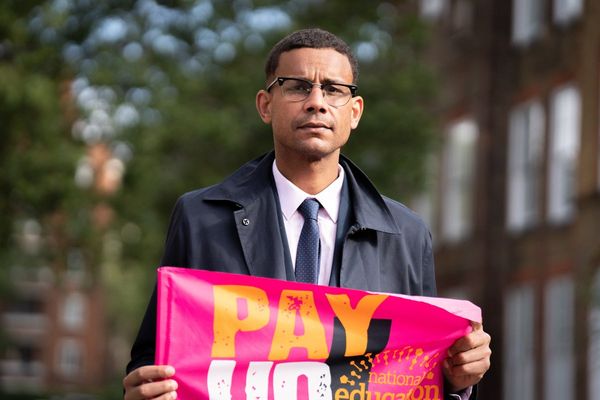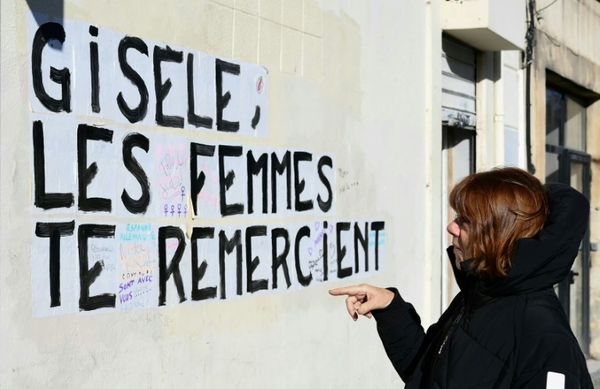
Antiquities from Egypt, Iraq and China.
Religious objects from Medieval Europe, Jerusalem and India.
Paintings by Rembrandt, Manet and van Gogh.
Netsuke figurines from Japan and pre-Columbian figurines from Central America.
Furniture, glass, jewelry.
The aim of an encyclopedic museum has always been something of a fool’s errand, attempting to collate, interpret and display the entirety of humanity’s creativity. Doing so, of course, proves impossible.
No museum is comprehensive of every artwork from every culture at every place and time in human history. All encyclopedic museums make choices when constituting their “encyclopedia.” Objects seen and left out are driven by priorities, access, funding.
At the Toledo Museum of Art, an encyclopedic museum founded in 1901, all of the above are on display. Previous generations of leadership have chosen to prioritize, pursue and purchase that material.
This generation of leadership has chosen to add a new section to the encyclopedia: quilts from Alabama, pencil drawings from Mississippi, painting from Louisiana.
Tangible evidence supporting the TMA’s objective to broaden the story of art history while not sacrificing excellence.
“Our vision is that the Toledo Museum of Art will be considered the model art museum in the United States for its commitment to quality and its culture of belonging,” Edward Drummond and Florence Scott Libbey President, Director and CEO at the Toledo Museum of Art Adam Levine told Forbes.com. “Foundational to that is this notion that quality is the most egalitarian and democratic concept there is. Quality doesn't discriminate. A focus on beauty without bias will result in representation.”

Beauty without bias can be seen at TMA in 24 artworks from Black makers across the Deep South through May 1, 2022, during its exhibition “Living Legacies: Art of the African American South.”
Each piece has been acquired by TMA in the past two years from the Souls Grown Deep Foundation, a non-profit organization dedicated to documenting, preserving and promoting the artistic production and cultural traditions of Black artists from the rural South.
“We’re questioning what ‘encyclopedic’ truly means–can we truly have everything represented,” exhibition curator Jessica S. Hong, TMA’s curator of modern and contemporary art, told Forbes.com. “All of these artists were always here. It’s not about ‘discovery,’ it’s about truly representing the larger, global art historical narratives that museums should be telling.”
With artworks in the show now belonging to the museum, the exhibition doesn’t merely check a representational box or serve as a hit-and-run attempt at diversity and inclusion. TMA is committed to fully incorporating these items into its existing American art collection, a collection which will undergo a complete overall within the next year to broaden its perspective while maintaining what Levine describes as the museum’s “relentless focus on quality.”
In doing so, the TMA will rewrite its encyclopedia.
“The superpower that an art museum has is when something goes up on the wall, it's considered good. We set the canon,” Levine said. “By displaying these artworks, we not only center them in the narrative of American art history and art history in general, but by acquiring them, we demonstrate that they are of superlative quality, on par with everything else in this museum. This is an opportunity for us to recognize the value of artists who haven't been given the opportunity historically to be showcased at institutions like ours.”

In certain ways, objects in “Living Legacies” are unlike anything else in the museum. No other artworks at TMA are produced from old denim work clothes or sheet metal. No other artists in the collection call Panther Burn, MS or Tallapoosa, GA home. No other paintings feature carpet. No other sculptures rebar.
Look closely, however, and universal themes from prehistory through the Middle Ages, Renaissance and modern day are apparent.
“Through lines are community, family, socio-political conditions, spirituality, faith, but also the joy these artists get from their art practices,” Hong explains.
In that way, the museum’s painting by El Greco from the late 1500s is no different than its assemblage by Leroy Alman from 1984, on display in “Living Legacies” a couple galleries away.
Both also help achieve one of the museum’s primary objectives.
“We want to have our communities feel like they are part of a larger national, global, cultural and social fabric,” Hong said. “While it’s important to focus on our local community because that’s our audience, we also hope they see themselves as part of a larger narrative as well.”
A continuum through time and across place. Not removed from, connected to. No visitor will connect with every item on view in a great encyclopedic museum like the TMA, but every visitor will connect with something. Every visitor will be amazed by something. Every visitor will see her, his or their story reflected, be that in a 19th century gold and turquoise brooch from England or a housetop quilt sewn by Martha Pettway (1911-2005) in Boykin, AL.
Toledo Surprises

Levine is quick to tell anyone who’ll listen that no city can be a great city without a great art museum. Toledo has that. Executive Director of Metroparks Toledo Dave Zenk says the same thing about parks. Toledo is working on that.
Metroparks Toledo manages 19 parks across Lucas County with plans to open three more in the next two years.
Started during the Great Depression as Works Progress Administration and Civilian Conservation Corps projects, Metroparks Toledo has experienced dynamic growth in the 2000s. Toledo, in a story told across the Rust Belt, had been rocked by the loss of thousands of manufacturing jobs in the later decades of the 20th century. Reeling as it entered a new millennium, citizens and leadership looked inward for a solution to blight, pollution and a pervasive feeling of despair for this city once home to nine Fortune 500 companies during its industrial heyday in the 1950s.
Parks emerged as a solution.
Since 2003, the park system has increased its land holdings by more than 60 percent. Metroparks Toledo now cares for over 12,000 acres of parkland and trails with a Metropark no more than five miles from every front door in the county.
The most exciting developments are presently occurring along the Maumee River connecting downtown to Lake Erie three miles away. From Lake Erie, products made in Toledo reach the Great Lakes, the St. Lawrence Seaway, the Atlantic Ocean and the rest of the world. The Maumee River and Lake Erie allowed Toledo to become one of the busiest ports in America during the 1960s.
In September of 2018, Metroparks purchased 67 acres of riverfront land adding to its existing holdings with a vision of connecting neighborhoods on both sides of the river. A taste of what’s possible thrilled residents when phase one of the Glass City Metropark opened in 2021.
Land previously used for road salt storage, landfill and abandoned warehouses will soon draw millions of visitors downtown for recreation, shopping, dining and residences.
Critical ecological services will be provided. The shoreline is being restored. Believe it or not, this formerly industrial section of the Maumee River boasts the most productive walleye spawning grounds in the world. More than 2,000 trees are being planted along with native plants. Stormwater wetlands and bioswales will filter runoff on property once so toxic weeds wouldn’t grow.

Glass City Metropark will eventually connect to a broader Glass City Riverwalk which will restore more than 90 acres of industrial or vacant land through Toledo’s downtown corridor to natural space. Nearly 25,000 trees will be planted along the river on land once occupied by two coal fired powerplants. When completed later this decade, more than 30,000 residents from surrounding neighborhoods will be within one mile of clean, safe, natural space.
In a model that should be replicated nationwide, Toledo has been able to achieve so much so fast with its parks system and riverfront because conservation, economic vitality, recreation and human health all share top priority in the planning. The parks and river are not special interest projects, they’re everyone’s interested projects.
At this rate, Toledo’s best days may not be 70 years in the rearview mirror, but tantalizingly just a few years away.







